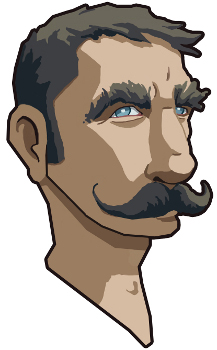"Leiningen!" he shouted. "You're insane! They're not creatures you can fight—they're an elemental—an 'act of God!' Ten miles long, two miles wide—ants, nothing but ants! And every single one of them a fiend from hell..."
- from Leiningen Versus the Ants by Carl Stephenson
Leiningen is for automating Clojure projects without setting your hair on fire.
If your preferred package manager offers a recent version of Leiningen, try that first as long as it has version 2.x.
Leiningen installs itself on the first run of the lein shell script; there is no
separate install script. Follow these instructions to install Leiningen manually:
- Make sure you have Java installed; version 8 is recommended at this time.
- Download the
leinscript from thestablebranch of this project. - Place it on your
$PATH. (~/binis a good choice if it is on your path.) - Set it to be executable. (
chmod +x ~/bin/lein) - Run it.
There is an installer which will handle downloading and placing Leiningen and its dependencies.
The manual method of putting
the batch file.
on your PATH and running lein self-install should still work for
most users. If you have Cygwin you should be
able to use the shell script above rather than the batch file.
N.B.: Avoid using a LEIN_JAR environment variable.
If you have one instance of Leiningen on your PATH as well as a LEIN_JAR
pointing to a different instance, there is a known problem where lein -v and
lein upgrade will refer to the first instance, while usage of Leiningen, such
as lein new foobar, will refer to the latter.
The tutorial has a detailed walk-through of the steps involved in creating a new project, but here are the commonly-used tasks:
$ lein new [TEMPLATE] NAME # generate a new project skeleton
$ lein test [TESTS] # run the tests in the TESTS namespaces, or all tests
$ lein repl # launch an interactive REPL session
$ lein run -m my.namespace # run the -main function of a namespace
$ lein uberjar # package the project and dependencies as standalone jar
$ lein deploy clojars # publish the project to Clojars as a library
Use lein help to see a complete list. lein help $TASK shows the
usage for a specific task.
You can also chain tasks together in a single command by using the
do task with comma-separated tasks:
$ lein do clean, test foo.test-core, jar
Most tasks need to be run from somewhere inside a project directory to
work, but some (new, help, search, version, and repl) may
run from anywhere.
The project.clj file in the project root should look like this:
(defproject myproject "0.5.0-SNAPSHOT"
:description "A project for doing things."
:license "Eclipse Public License 1.0"
:url "http://github.com/technomancy/myproject"
:dependencies [[org.clojure/clojure "1.8.0"]]
:plugins [[lein-tar "3.2.0"]])The lein new task generates a project skeleton with an appropriate
starting point from which you can work. See the
sample.project.clj
file (also available via lein help sample) for a detailed listing of
configuration options.
The project.clj file can be customized further with the use of
profiles.
Leiningen documentation is organized as a number of guides:
- Tutorial (start here if you are new)
- FAQ
- Profiles
- Deployment & Distribution of Libraries
- Sample project.clj
- Polyglot (e.g. Clojure/Java) projects
Leiningen supports plugins which may introduce new tasks. See
the plugins wiki page
for a full list. If a plugin is needed for successful test or build
runs, (such as lein-tar) then it should be added to :plugins in
project.clj, but if it's for your own convenience (such as
lein-pprint) then it should be added to the :plugins list in the
:user profile in ~/.lein/profiles.clj. See the
profiles guide
for details on how to add to your :user profile. The
plugin guide
explains how to write plugins.
Source Copyright © 2009-2017 Phil Hagelberg, Alex Osborne, Dan Larkin, and contributors. Distributed under the Eclipse Public License, the same as Clojure uses. See the file COPYING.
Thanks to Stuart Halloway for Lancet and Tim Dysinger for convincing me that good builds are important.
Images Copyright © 2010 Phil Hagelberg. Distributed under the Creative Commons Attribution + ShareAlike License. Full-size version available.
